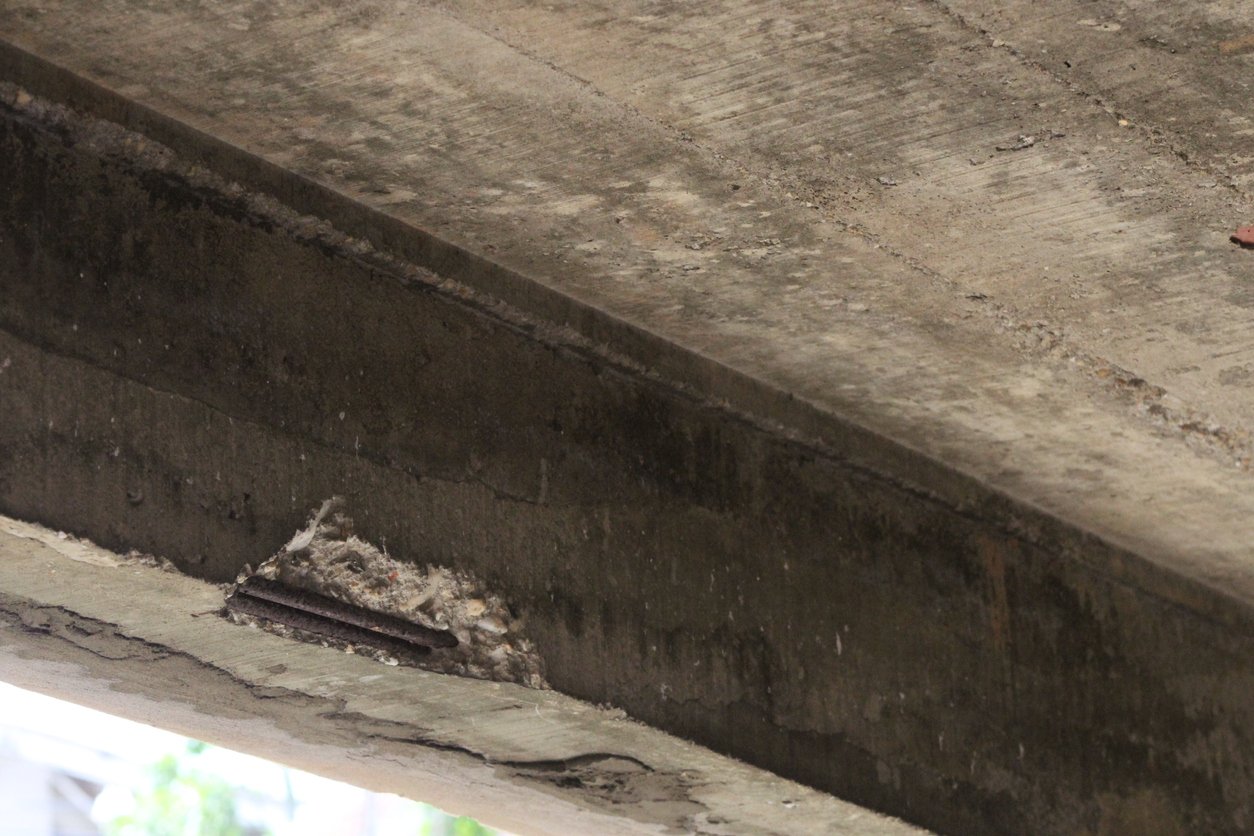What is concrete spalling?
The term "spall" can be defined as the process of breaking into small sections. So, spalling is the process of concrete breaking into small pieces to uncover its internal parts to the air. Concrete spalling results from certain chemical reactions inside the concrete, leading to the development of many unfamiliar compounds. Due to the lack of space in the concrete, these additions build inner weight. Therefore, splits occur to deliver the new weight outside.
These new breaks clear a path for the air to react with the inside part of the concrete, thus expanding the risk of damage even further. Furthermore, the splits will make the concrete tumble off. Spalling of concrete affects a diverse range of structures, including multilevel parking garages, framed buildings, jetties, bridges, tanks, and bands. Solving concrete issues as soon as possible is essential, as unresolved spalling undermines the surface integrity and distorts a structure's aesthetic look. Want to learn more about concrete spalling? Keep on reading.
What does concrete spalling look like?

Spalling is the weakening of a concrete surface over time. It begins with a crack line forming first, then pieces of concrete falling out as the issue progresses. Concrete spalling is caused by moisture entering the layer covering the steel reinforcements in the column, beam, or foundation pier. As time goes by, the steel starts to rust inside the beam. Since it is a slow but powerful expansive process, cracks also occur at the surface over the supporting steel. The damage is progressive since the open crack permits more moisture to quicken the corrosion. It is commonly known as the ferrous oxide scale, and it ends up opening the crack even more.
What are the causes of concrete spalling?
Generally, extreme moisture and carbonation cause the formation of concrete spalling slabs. But there are numerous ways in which concrete spalling can happen. They include:
- Fire exposure: Fire exposure occurs when free water in concrete changes to steam, thus creating internal expansion and eventual concrete spall.
- Corrosion of embedded support steel: Rust and rusted components occupy more space than the original steel parts. As a result, the increased pressure creates spalls in the concrete.
- Freezing and thawing cycles: The freeze and thaw cycle is a weathering erosion process common in cold areas where ice usually forms. When water enters the concrete, it freezes into ice when the temperature drops. As this ice expands, it may cause cracks in the concrete. Then, when the temperatures rise, this ice melts into water, causing more damage to the interior. The freeze and thaw cycle continues until it leads to spalling concrete slabs.
- Alkaline chemical reactions: An alkali-silica reaction occurs when a reaction between the alkaline cement paste and reactive silica in concrete develops. These reactions result in increased pressure, swelling, and spalling of concrete.
Additional causes of concrete spalling can include:
- Lack of adequate depth of cover over reinforcement
- Poorly constructed joints, which results in joint spalls
- Poor quality concrete cover over support steel
- Improper curing or poor finishing techniques
- Lack of bonding in a two-course construction
What can you do when concrete spalls?
When you notice that your concrete is spalling, you can repair it or hire professionals to help you. But there are various ways to prevent concrete spalls in the first place. They include:
Painting ceilings regularly
When you paint surfaces more often, it slows down the carbonation process and prevents moisture from getting into the concrete. Try using good quality paint or anti-carbonation chemicals to paint your ceiling at least every three to five years. You can hire the services of painting experts to do the job for you.
Sealing holes and cracks well
Holes and cracks allow moisture to seep into the concrete surfaces. So, let experts inspect your home and seal imperfections as soon as you can. Also, if you come across a drilled hole that's no longer in use, seal it to prevent moisture penetration.
Provide sufficient ventilation
It's important to know that humidity quickens the carbonation process. So, when you don't use moisture-prone places like the bathroom and kitchen often, open the vents, windows, or doors to provide proper ventilation.
How to repair spalling concrete
The best way to repair spalling concrete is by seeking professional service. Why? Fixing the concrete issues yourself can be extremely difficult and can be dangerous. Also, when you do it yourself, there is a high risk of further damage to your home or structure if it's not done correctly.
Fortunately, First Response Maintenance Solutions is ready to help. We have experience in detailed preventative and repairing spalling concrete. We have an experienced team that will do a quality job. Get an inspection quote today.
Let First Response Maintenance Solutions repair your concrete spalling
At First Response Maintenance Solutions, we believe preventative concrete maintenance is the way to go. So, it's a great idea to use water-resistant formulas. Let us repair your concrete spalling as soon as possible so your structure maintains its integrity. Contact us to find out how our concrete maintenance team can help you.
